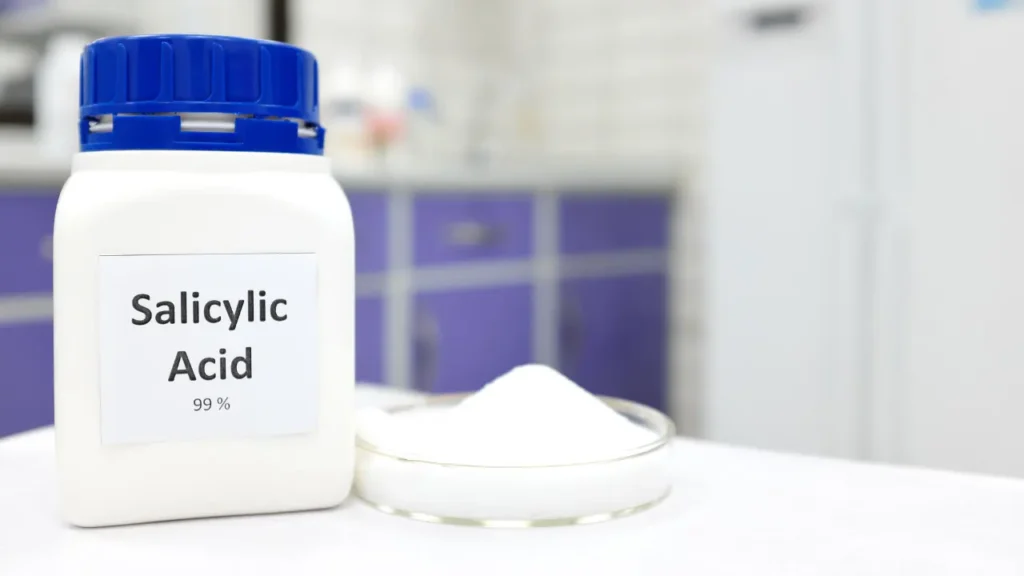Willow bark, which is made from the bark of different willow tree species (Salix spp.), has long been used in traditional medicine. Willow bark has been used therapeutically since ancient civilizations like the Egyptians and Greeks first used it for its analgesic and anti-inflammatory effects. Salicin, the main active ingredient in willow bark, is converted into salicylic acid when consumed. With regard to the appropriate use of this natural supplement, this article aims to present a thorough analysis of its nature, health advantages, recommended dosage, side effects, potential drug interactions, and other relevant information.
You May Also Like:
5 Great Nootropic Herbs for Energy, Focus, and Productivity
A Nootropic Herb for Cognitive Enhancement: Discover Bacopa Monnieri Benefits and Side Effects
Willow Bark: Benefits, Dosage, Side Effects, Drug Interactions, And Other Important Information is an original (NootropicsPlanet) article.
Nature of Willow Bark
Willow bark is made from the willow tree’s bark and contains several bioactive substances. Salicin, a phenolic glycoside that is the primary active component, is also present along with other secondary metabolites like flavonoids, tannins, and phenolic acids. Willow bark’s chemical makeup varies based on the Salix species, the surrounding environment, and the time of year it is harvested. Salicin is still the major chemical in willow bark that produces pharmacological effects.
Health Benefits
Effects of Analgesia and Anti-Inflammation
Salicin inhibits the cyclooxygenase (COX) enzymes, especially COX-1 and COX-2, to provide analgesic and anti-inflammatory actions after conversion into salicylic acid. These enzymes work to create prostaglandins, which are essential for the occurrence of heat, discomfort, and inflammation. Salicylic acid lessens the formation of prostaglandins by blocking COX enzymes, hence reducing inflammation and pain. Numerous clinical trials have shown the effectiveness of willow bark in treating conditions like osteoarthritis, rheumatoid arthritis, and lower back pain.
Antioxidant Characteristics
Due to the presence of flavonoids and phenolic acids in willow bark, free radicals are neutralized, and oxidative stress is avoided. Numerous chronic diseases, such as cancer, cardiovascular disease, and neurodegenerative disorders, are thought to be triggered by oxidative stress. Willow bark’s antioxidant properties may, therefore, add to its overall health advantages.
Microbiological Activity
Staphylococcus aureus and Candida albicans are the only two bacteria and fungi that willow bark effectively fights off. Salicin and flavonoids, two examples of phenolic chemicals, are said to have this antibacterial ability. Thus, willow bark may be used to treat some infections as a natural substitute for artificial antibiotics.

Chemistry of Willow Bark
Salicin
Willow bark contains salicin (C13H18O7), an aromatic phenolic glycoside that is the main active ingredient. It comprises a glucose molecule connected by an O-glycosidic link to a salicyl alcohol moiety. Salicin is a prodrug, which means that it is converted into its active form, salicylic acid, by the body. Salicin is a tasteless, colorless, crystalline substance that is soluble in both water and alcohol.
Flavonoids
Willow bark contains polyphenolic substances called flavonoids that help give it its antioxidant effects. They are composed of a C6-C3-C6-arranged 15-carbon skeleton. Willow bark contains a variety of flavonoids, the most prevalent of which are quercetin, kaempferol, and their glycosides. Among other biological actions, flavonoids have anti-inflammatory, antibacterial, and vasodilatory effects.
Tannins
Tannins are intricate, water-soluble polyphenols that interact with proteins and other large molecules to create complexes. They can be divided into two primary categories: condensed tannins and hydrolyzable tannins. The hydrolyzable tannins gallic acid and ellagic acid dominate in willow bark. Tannins have astringent and antioxidant qualities, which may help explain why willow bark has antibacterial characteristics.
Physiological Mechanism of Action
Mechanisms of Analgesia and Anti-Inflammation
Willow bark’s analgesic and anti-inflammatory effects work mainly by inhibiting COX enzymes, especially COX-1 and COX-2, through the action of salicin’s metabolite, salicylic acid. COX enzymes produce prostaglandins, which are important in controlling pain, fever, and inflammation. Salicylic acid lessens the formation of prostaglandins by inhibiting COX enzymes and lowering pain and inflammation.
Oxidative Mechanism
The presence of flavonoids and phenolic acids is primarily responsible for the antioxidant action of willow bark. These substances scavenge reactive oxygen species (ROS), one type of free radical, and prevent new ROS production. Flavonoids and phenolic acids protect biological components from oxidative damage and oxidative stress by scavenging free radicals.
Microbiological Mechanism
Salicin and other phenolic chemicals found in willow bark and flavonoids are primarily responsible for the bark’s antibacterial activity. These substances can damage microorganisms’ cell walls and membranes, prevent microbial adhesion and interfere with vital microbial enzymes, which prevents bacterial and fungi growth. The precise mechanisms may change depending on the particular microbe and the phenolic chemical in question.


Optimal Dosage
The best dosage of willow bark depends on several variables, including the particular medical condition being treated, the patient’s age, and the supplement’s formulation. Willow bark extract with 120–240 mg of salicin daily has often been used for pain management and anti-inflammatory effects. Before starting a willow bark supplement, it is essential to speak with a medical expert to identify the proper dosage for each person’s needs.
Side Effects
Willow bark is typically well tolerated when used in accordance with suggested dosages. However, some people may experience adverse effects like rashes, nausea, and dizziness. Willow bark has the potential to cause Reye’s syndrome, a rare but serious illness characterized by abrupt encephalopathy and liver malfunction, especially in kids and teenagers recovering from viral infections, as a result of the salicin content in it.
Potential Substance Interactions
Antiplatelet and anticoagulant medications
Due to its salicin concentration, which has antiplatelet qualities, willow bark may interact with anticoagulants like warfarin and antiplatelet drugs like aspirin and clopidogrel, raising the risk of bleeding. Therefore, before taking willow bark supplements, people who are taking these medications should use caution and talk to their doctor.
NSAIDs (non-steroidal anti-inflammatory drugs)
Willow bark and NSAIDs (such as ibuprofen and naproxen) taken together may have additive effects on the inhibition of the COX enzyme, thus raising the risk of gastrointestinal bleeding and other side effects. Before combining willow bark with NSAIDs, it is advisable to speak with a medical expert.
Drugs for Treating Hypertension
Willow bark may reduce the efficiency of antihypertensive drugs by interfering with prostaglandin’s vasodilatory properties. Before using supplements containing willow bark, anyone taking antihypertensive drugs should discuss any potential interactions with their doctor.


Responsible Use of Willow Bark
The following suggestions are to be taken into account to ensure the ethical use of willow bark:
- Consultation with a healthcare provider: Prior to beginning any new supplement, including willow bark, it is important to speak with a licensed healthcare professional in order to determine the supplement’s suitability, establish the best dosage, and look for any potential drug interactions or underlying medical conditions.
- Quality control: To guarantee the reliability and security of willow bark supplements, choose a reputable and reliable brand that follows Good Manufacturing Practices (GMP) and offers independent testing for purity and potency.
- Monitoring and follow-up: For responsible use, regular follow-ups with a healthcare provider are recommended to monitor progress, evaluate tolerance, and make any necessary alterations to the dosage or duration of supplementation.
Willow Bark:
Conclusion
It’s important to note that while willow bark, due to its salicin content, offers potential health benefits as a natural remedy for pain relief and inflammation, it may not be suitable for everyone. More high-quality clinical trials are needed to confirm its efficacy and safety. Individuals with allergies to aspirin or salicylates, bleeding disorders, gastrointestinal ulcers, or other medical conditions should exercise caution when using willow bark.
Additionally, pregnant and breastfeeding women should avoid its use. As with any herbal remedy, individuals considering the use of willow bark should consult with a healthcare professional, especially if they have underlying health conditions or are taking medications. They can provide personalized advice on its safety and appropriate dosage based on your individual health needs.


References:
- Anti-inflammatory and Analgesic Effects of Salix Alba Bark Extract. Retrieved from: https://www.ncbi.nlm.nih.gov/pmc/articles/PMC3409453/
- Clinical Efficacy and Safety of Willow Bark Extract for Pain Relief. Retrieved from: https://onlinelibrary.wiley.com/doi/10.1002/ptr.5377
- The Mechanism of Action of Salicin in Willow Bark and Aspirin-Like Drugs. Retrieved from: https://www.ncbi.nlm.nih.gov/pmc/articles/PMC2634259/
Important Note: The information contained in this article is for general informational purposes only, and should not be construed as health or medical advice, nor is it intended to diagnose, prevent, treat, or cure any disease or health condition. Before embarking on any diet, fitness regimen, or program of nutritional supplementation, it is advisable to consult your healthcare professional in order to determine its safety and probable efficacy in terms of your individual state of health.
Regarding Nutritional Supplements Or Other Non-Prescription Health Products: If any nutritional supplements or other non-prescription health products are mentioned in the foregoing article, any claims or statements made about them have not been evaluated by the U.S. Food and Drug Administration, and such nutritional supplements or other health products are not intended to diagnose, treat, cure, or prevent any disease.
